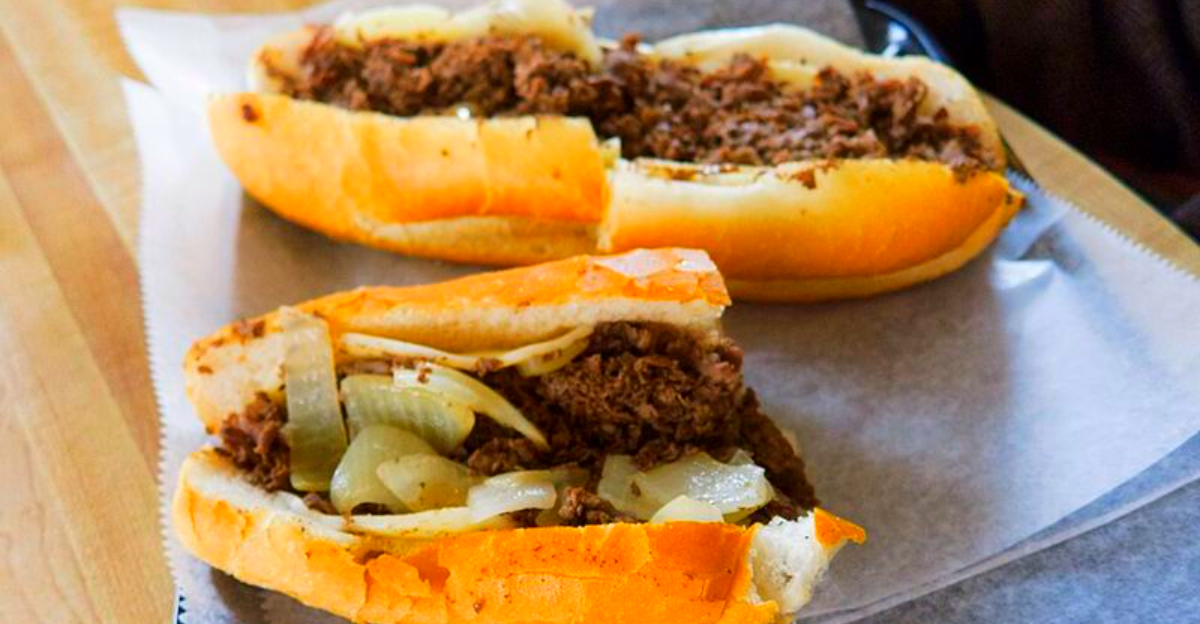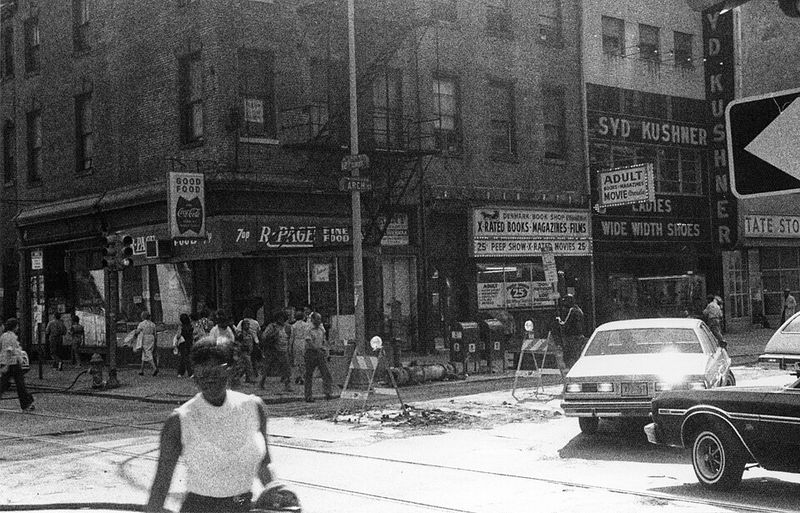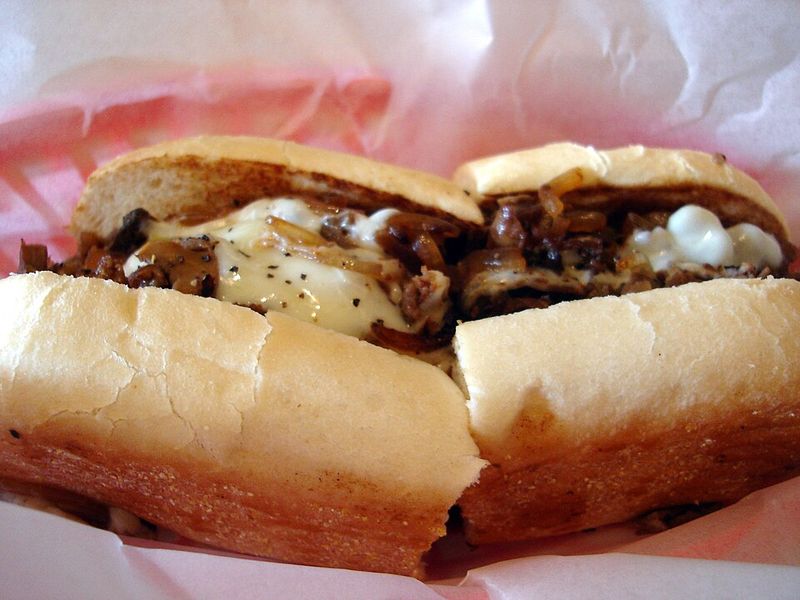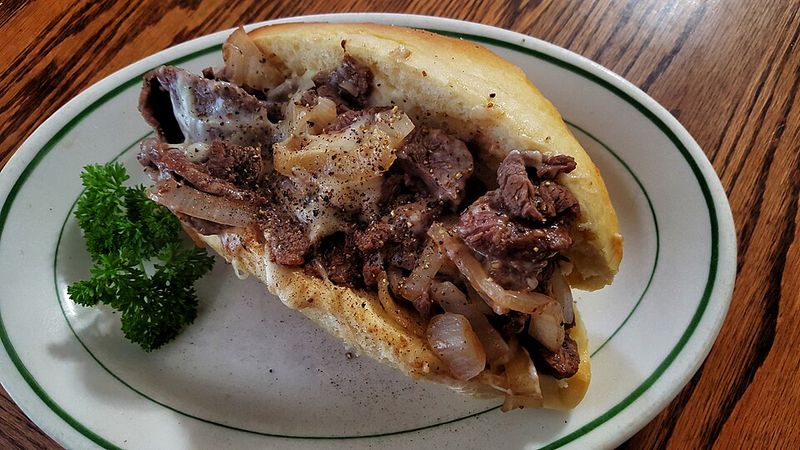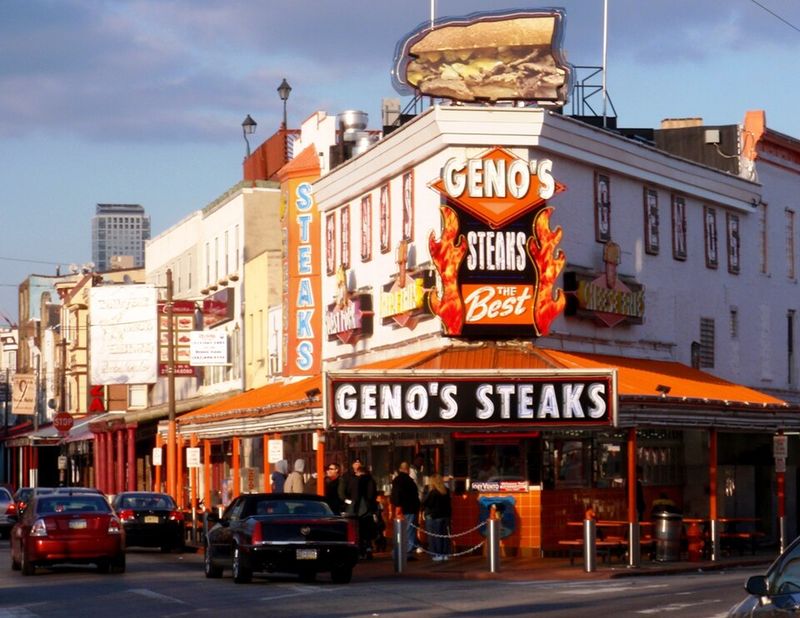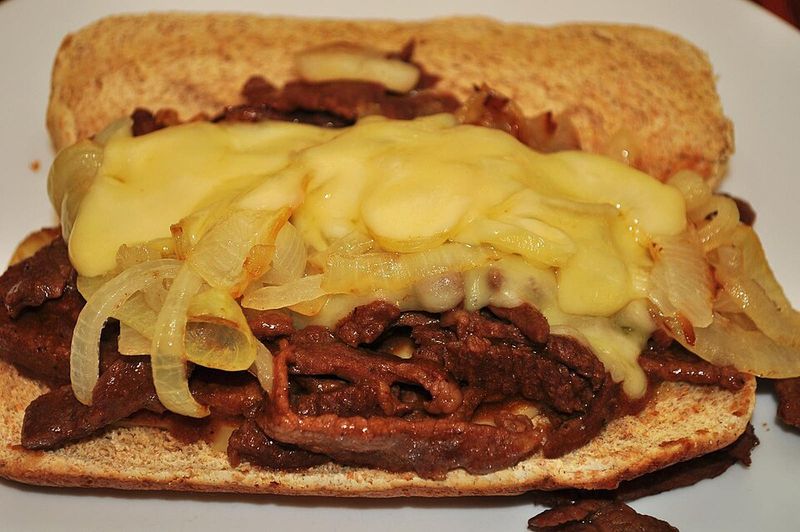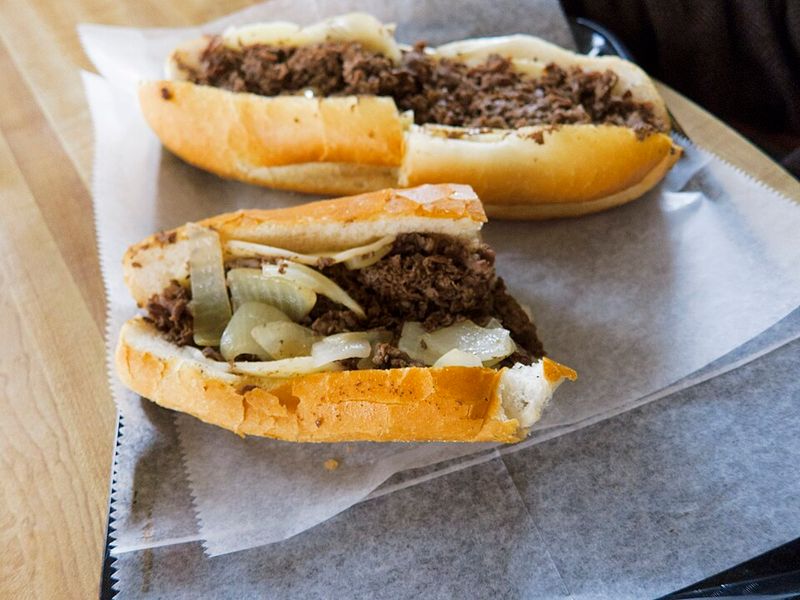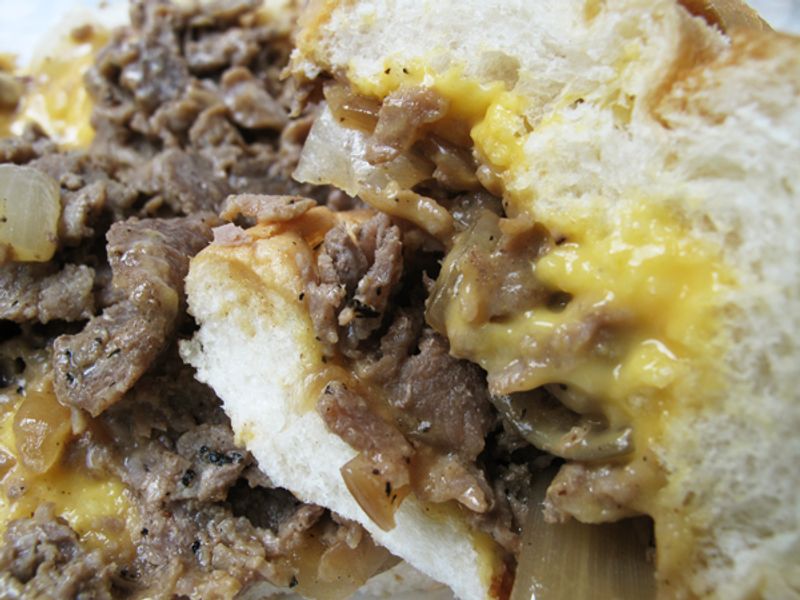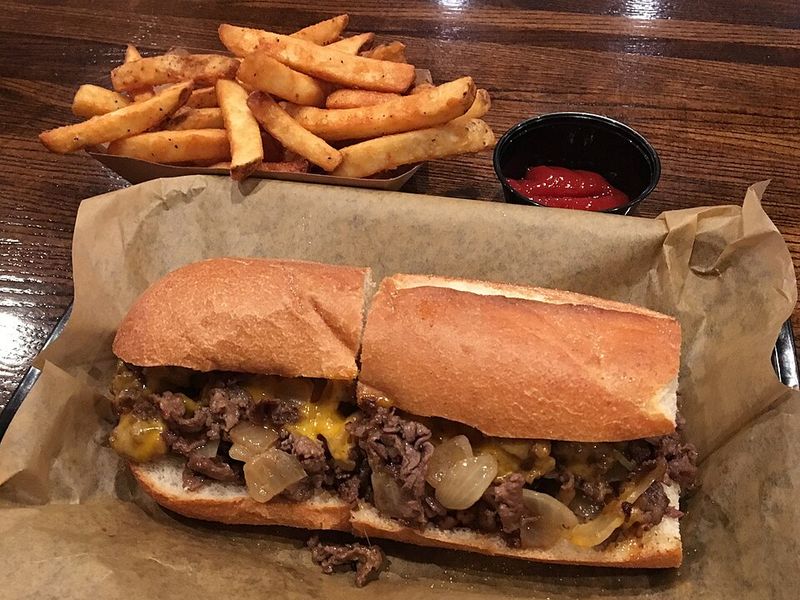The Philly cheesesteak, an iconic symbol of Philadelphia’s culinary scene, has an origin story as rich and flavorful as the sandwich itself. Born out of a happy accident, this beloved dish has captured the hearts and taste buds of locals and tourists alike. Here are 11 surprising facts about how this delectable creation came to be, showcasing its journey from a humble street food to a cultural phenomenon.
1. It All Started with a Hot Dog Stand
In the bustling streets of 1930s South Philadelphia, a modest hot dog stand became the birthplace of a culinary legend. Pat Olivieri, an enterprising vendor tired of his usual offerings, decided to experiment one day. He cooked up some sliced beef with onions, placing it on an Italian roll.
This simple act of culinary curiosity sparked something extraordinary. The intoxicating aroma caught the attention of a passing cab driver. Little did Pat know, this impromptu creation would revolutionize his business and inspire the birth of the Philly cheesesteak.
The stand soon became a buzzing hub for those seeking a hearty and delicious meal, setting the stage for a delicious legacy.
2. The First Customer Wasn’t Even Supposed to Get One
The magic began with a chance encounter on a typical day in Philadelphia. A cab driver, drawn by an irresistible scent, stopped at Pat Olivieri’s stand for a taste of something new. This first unintentional customer was instantly hooked.
His enthusiastic recommendation to fellow cabbies set off a chain reaction. What started as a random lunch quickly gained popularity among the city’s taxi drivers. The cheesesteak’s fame grew beyond the bustling streets, captivating an entire city.
It was a moment of serendipity that transformed an ordinary meal into an iconic staple, proving that sometimes the best ideas arise from simple chance.
3. Cheese Wasn’t Part of the Original Recipe
Imagine a cheesesteak without its signature gooey topping. Initially, this was the norm, as cheese was absent from Pat Olivieri’s original recipe. The sandwich consisted solely of beef and onions, capturing the essence of simplicity.
The introduction of cheese came later, in the hands of Joe “Cocky Joe” Lorenza, a creative restaurant manager. In the 1940s, he decided to enhance the flavor by adding provolone, a decision that would elevate the sandwich to new heights.
This innovation marked a turning point, forever changing the culinary landscape and setting the foundation for the endless cheese debates that continue today.
4. The First Shop Was Born from Street Food Success
Pat’s experiment with sliced beef and onions quickly turned into a phenomenon. His success on the streets led to the establishment of Pat’s King of Steaks in 1930. The shop opened its doors at 9th Street and Passyunk Avenue, where it remains a vibrant part of the community.
This humble brick-and-mortar location became a pilgrimage site for cheesesteak enthusiasts. What began as a fleeting idea evolved into a bustling restaurant, serving hundreds of hungry patrons daily.
Pat’s journey from roadside vendor to restaurant owner is a testament to the power of innovation and the timeless appeal of a well-crafted sandwich.
5. The Rivalry with Geno’s Came Decades Later
Decades after Pat established his shop, a new contender entered the scene. In 1966, Geno’s Steaks opened its doors directly across from Pat’s, sparking a legendary rivalry. This friendly competition became a defining element of Philadelphia’s food culture.
Geno’s, with its vibrant neon signs, offered a new twist on the classic cheesesteak, challenging Pat’s established dominance. The battle for cheesesteak supremacy captured the city’s imagination, inviting locals to choose their allegiance.
This rivalry, steeped in tradition and passion, continues to thrive, adding a dynamic layer to the cheesesteak legacy that endures to this day.
6. The Bread Is a Local Legend Itself
In the world of cheesesteaks, the bread is more than a mere vessel. Amoroso’s Baking Company, renowned for its soft-yet-crusty rolls, played a crucial role in the sandwich’s success. The perfect roll provides the ideal foundation.
This locally baked bread offers a unique texture that complements the savory filling, making it essential to the authentic Philly cheesesteak experience. Its quality and consistency are unmatched, contributing to the sandwich’s renowned status.
Amoroso’s commitment to excellence ensures that each bite delivers the perfect harmony of flavors, solidifying its place in Philadelphia’s culinary history.
7. Provolone or Cheez Whiz? The Debate Rages On
When it comes to cheesesteaks, the cheese choice can spark passionate debates. While provolone brings a classic touch, Cheez Whiz offers a gooey indulgence. Introduced in the 1950s, Cheez Whiz quickly became a favorite.
Purists may argue for provolone or American cheese, but each variety offers a distinct flavor profile. The debate over which cheese reigns supreme adds a dynamic element to the cheesesteak narrative.
This ongoing battle of tastes ensures the sandwich remains a versatile delight, inviting patrons to tailor their experience to personal preference.
8. “Wit” or “Witout” Means Onions — Not Cheese
In the vibrant world of Philly cheesesteaks, ordering etiquette is key. The terms “wit” or “witout” refer to the inclusion or exclusion of onions, not cheese. Mastering this lingo is a rite of passage for locals and visitors alike.
“Wit” signals a desire for the flavorful addition of onions, enhancing the sandwich’s savory depth. On the other hand, “witout” offers a more straightforward approach, allowing the meat and cheese to shine.
This unique linguistic twist adds character to the ordering experience, making each cheesesteak a personalized creation steeped in tradition.
9. The Sandwich Fueled Late-Night Workers and Cabbies
In the heart of Philadelphia’s bustling nightlife, the cheesesteak emerged as a staple for late-night workers. Positioned near a taxi stand, it provided a satisfying meal for cabbies and other night shift employees.
The sandwich’s hearty nature made it an ideal choice for those needing sustenance during long hours. Its availability around the clock ensured it became a beloved option for anyone seeking a quick, delicious bite.
This connection to the working class cemented the cheesesteak as more than just a meal—it became a symbol of Philadelphia’s industrious spirit and communal ties.
10. It’s Been Imitated Across America — But Never Duplicated
From coast to coast, many have tried to recreate the Philly cheesesteak. Yet, no imitation captures the authentic taste that originates from Philadelphia’s unique ingredients and preparation.
The city’s distinct bread, beef, and even water contribute to its unmatched flavor. While variations exist, none can fully replicate the essence of the original.
This elusive quality keeps the Philly cheesesteak in a league of its own, a culinary treasure that continues to draw enthusiasts back to its birthplace.
11. Today, It’s a $1 Billion Cultural Symbol
The Philly cheesesteak has grown from humble beginnings to become a $1 billion industry. With its presence in festivals, food tours, and countless restaurants, it thrives as a cultural icon.
This economic impact underscores its significance within Philadelphia and beyond. Thousands of sandwiches are consumed daily, drawing tourists eager to taste this slice of history.
The cheesesteak is more than just a sandwich—it’s a beloved symbol of community and culinary innovation, celebrated by all who indulge in its timeless appeal.
